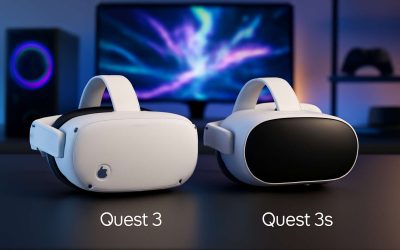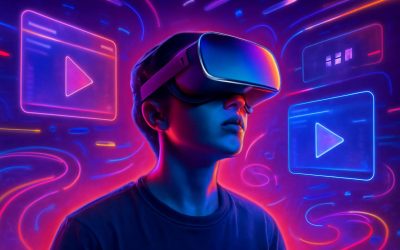
Virtual reality headsets allow users to immerse themselves in a virtual environment. These devices can be used for entertainment like playing VR games or for training and meetings such as virtual Zoom calls or presentations. The hardware in a VR headset uses a combination of lenses, offset screens and motion tracking technology to create a digitally immersive experience. The device is strapped over the user’s head and can be used with a pair of controllers for more interactive experiences.
There are a wide variety of VR headsets available, with some being completely wireless while others are tethered to a PC or gaming console. Most offer a high quality screen that is placed in front of the user’s eyes, with some offering a 360-degree view and other features to make them more immersive. They use a range of sensors including gyroscopes, accelerometers and other sensors built into the headsets to track the movement of the user’s head and other inputs to reposition and scale images and video in real time on the screen.
To produce a realistic image for the user, the headset will split each side of the frame with a series of lenses that are calibrated to appear three-dimensional. The device can then overlay the simulated image onto the user’s eyes, allowing them to move their head and look around the virtual space. Some headsets can also track the user’s hand movements and adjust corresponding input on the controllers to provide a more interactive experience.
The best VR headset will have a field of view (FOV) that is as large as possible to provide the most immersive experience. It will also have a low latency, which is the amount of time it takes for the headset to readjust the image based on the movement of the user’s head. This is important because any delay can cause dizziness and a feeling that the images aren’t real.
Some of the higher-end headsets also include eye tracking sensors that can detect when a user looks at a specific area of the screen, adding a further level of immersion and realism. These systems can be a bit more costly than simple head tracking, but the additional functionality makes a VR headset more premium and easier to use.
While VR is still a relatively new technology, developers are finding more and more ways to make it useful for consumers. From shopping for a home to experiencing concerts in the front row, there’s no shortage of content to explore with a VR headset. However, not everyone will be able to enjoy it as some headsets are uncomfortably uncomfortable or require a high-end PC setup to run.



0 Comments